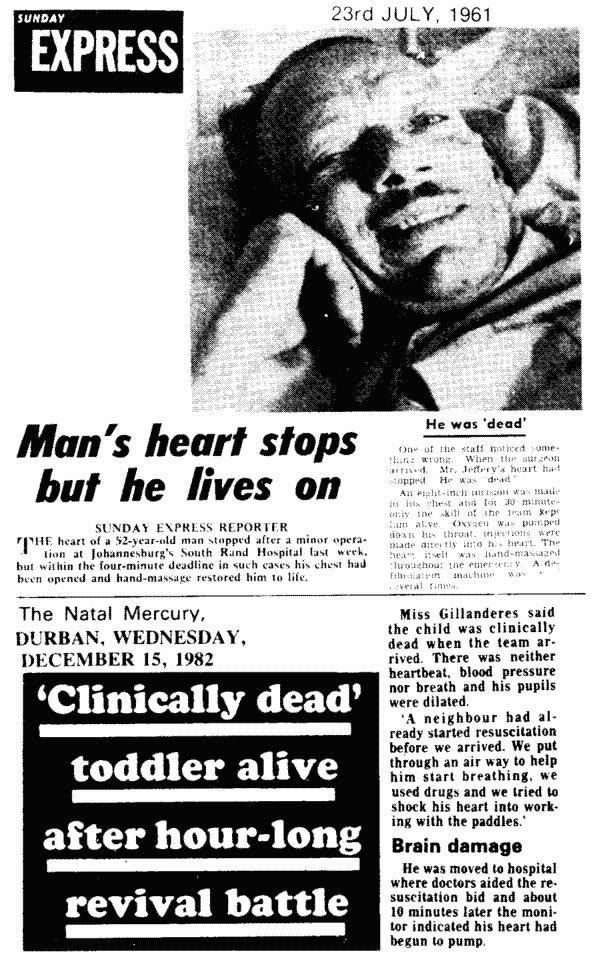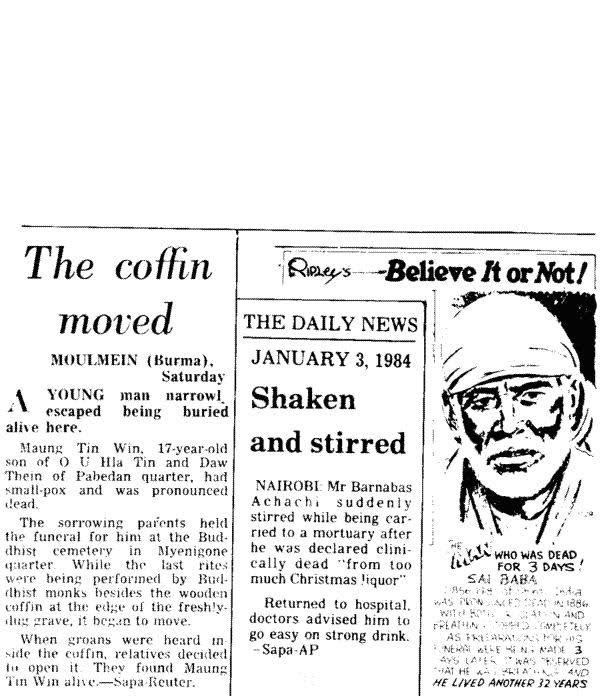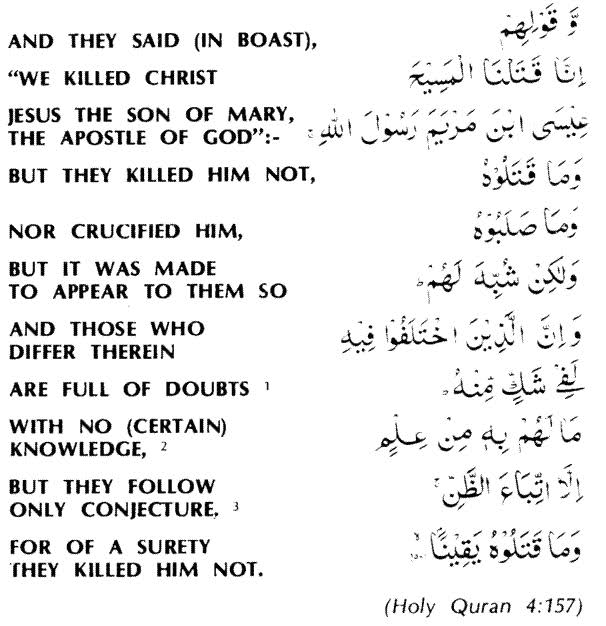I don't see a one of these contradicting the message that Jesus was crucified.
Yes, most certainly Jesus is seen as alive later. But that doesn't mean he wasn't crucified. THE message of all four gospels is clear: Jesus was crucified, dead and buried. That should be the end of the story, at least it is with most people. But it isn't with Jesus. Why not? Becuase, as each of the gospels go on to report, not only did Jesus die, but he was also raised to life again from the dead. This phrase "from the dead" is used by every New Testament writer, save James and Jude, as a way of referring to Jesus.
Jesus is supposed to have been on the cross for three hours and his legs and bones were not broken . According to the system in vogue, no man could die by crucifixion in so short a time ,The crucifixion is a slow lingering death unlike hanging a man, drowning a man etc which kills a man so soon which he would mean that he survived
And after the crucifixion Mary Magdalene alone (Mark 16:9 and John 20:1)
visited the tomb of Jesus.
The question arises: "Why did she go there?" "TO ANOINT HIM", Mark 16:1 tells us andThe second question is: "Do Jews massage dead bodies after 3 days?" The answer is "No!" "Do the Christians massage dead bodies after 3 days?" The answer is again, "No!" Do the Muslims (who are the nearest to the Jews in their ceremonial laws) massage dead bodies after 3 days?
And the answer is again, "No!" Then why should a Jewess want to massage a dead, decaying body after 3 days? We know that within 3 hours rigor mortis sets in - the stiffening of thebody after death. In 3 days time, the body would be fermenting from within - the body cells
would be breaking up and decomposing. If anyone rubs such a decaying body, it will fall topieces. Does the rubbing make sense? No!
It would, however, make sense if she was looking for a LIVE person. You see, she was aboutthe only person besides Joseph of Arimathe'a and Nicodemus who had given the final rites tothe body of Jesus. If she had seen any sign of life in the limp body of Jesus when he was takendown from the cross, she was not going to shout, "HE IS ALIVE!" She returns after 2 nights and
a day, when the Jewish Sabbath had passed, to take care of Jesus.
STONE REMOVED - WINDING SHEETS UNWOUND
She was sorely amazed to find on arrival, that somebody had already removed the stone and,on peeping into the tomb, she finds that the winding sheets (shroud) were folded up inside.More questions arise? "Why was the stone removed?" Because for a resurrected body, onewhich had conquered death, it was not necessary for the stone to be removed for it to get
out, nor was it necessary for the winding sheets to be unwound for it to move. Because, for a spiritualised body: "STONE WALLS DO NOT A PRISON MAKE, NOR IRON BARS A CAGE." The removal of the stone and the unwinding of the winding sheets was the need of aphysically resuscitated body, not that of a resurrectedbody! The empty tomb was an
anti-climax to what she had expected! So the hysterical woman (Jesus had had to cast out of her "seven devils" - Mark 16:9) breaks down and sobs. Jesus was all the while watching her from the vicinity - not from heaven, but from earth.Jesus is there! He is watching this woman. He knows who she is, and he knows why she is
there. He approaches her from behind, and finds her crying. So he asks her:
"Woman, why weepest thou? Whom seekest thou? -
(John 20:15). Before she replies,
allow me to interject: "Why does he ask what appears to be silly questions? Doesn't he knowthe obvious reasons? Of course he does! Then why the silly questions?"The answer is that in reality they are not silly questions, though they appear to be so. Heknows that this woman is looking for him, and she is disappointed on not finding him; hence the weeping. But he also knows that because of his heavy disguise she would not be able to
recognise him. So metaphorically speaking he is pulling her leg. In describing this incidentJohn, referring to Mary Magdalene, says: "She, supposing him to be the gardener, saith unto him". Now why should she suppose that he is a gardener? Do resurrected personslook like "gardeners"? No!! Then why does she suppose him to be a gardener? Because he is disguised as a GARDENER! Why is he disguised as a gardener? Because he is afraid of the
Jews! Why is he afraid of the Jews? Because he did not die and did not conquer death! Ifhe had died, and if he had conquered death, then he would not be afraid anymore. Why not?
Because a resurrected body cannot die twice! Who says so? The Bible says so. Where? In the
Book of
Hebrews 9:27. It says:
". . . it is ordained unto all men
ONCE to die, and after that the
judgement."
You cant die twice
BACK FROM THE DEAD ????
But what about the hundreds of people who have come back from the "dead"? We read about them daily in our newspapers.
Those persons who were certified dead, by medical men, and who subsequently came back to life; were not really DEAD, in the sense of DEATH AND RESURRECTION. Our Doctors have erred and will continue to make mistakes; it cannot behelped. newspaper reporter in each case is telling us, very subtly, that the "DEAD" was not really dead. That the "CORPSE" was not really a corpse, and that the "CRUCIFIXIONS" were not
really crucifixions but cruci-fictions! They were SO-CALLED dead, the SO-CALLED corpse,the SO-CALLED crucifixions, etc. But from the newspaper circulation point of view, the word"SO-CALLED" would greatly diminish the sensationalism, lessen the news value, and reduce
possible sales. After all business is business! Hence the inverted commas ". . ." In actual fact,no man ever dies twice. No matter how many death certificates are issued.
THE DRAMA CONTINUES
Mary supposing the disguised Jesus to be a gardener, says unto him:
"Sir, if you have taken HIM hence, tell me where have you laid HIM . . .
(John 20:15)
She is not looking for a corpse, for "it". She is looking for a LIVE person, for "HIM". And further, she wants to know as to "where have you 'LAID' him?" (i.e. To rest, to relax, to
recuperate!) NOT, "where have you BURIED him?"
"So that I might take HIM away."
(John 20:15)
Take HIM away, where? What would she want with a dead (?), decomposing body? She couldonly bury it. Who dug the grave? Carrying a corpse is one thing for an American Super-woman, but another for this frail Jewess; carrying a corpse of at least a hundred and sixty
pounds. That weight plus another 100 pounds of medicants (according to John 19:39) wouldmake a neat load of 260 pounds. Carrying would be one thing, but burying? She would haveto dump it in a hole! Does it make any sense?The prank that Jesus was playing upon this woman had gone too far. The woman had notbeen able to see through the disguise yet and Jesus was "laughing under his breath", but could restrain himself no longer. He blurts
out: "M-A-R-Y!" Only the one word! But it was enough. This one word, "Mary!" did what allthe exchange of words failed to do. It enabled Mary to recognise her Master. Everyone has his or her unique and peculiar way of calling one's nearest and dearest. It was not the mere utterance of the word "Mary", but its deliberate intonation which made her respond: "Master! Master!". Mad with happiness, she lunges forward to grab her Master, to pay reverence.
Jesus says,
"Touch me not!"
(John 20:17)
SOBERING QUESTIONS
Why not? Is he a bundle of electricity, a dynamo, that if she touches him, she might get electrocuted? No! "Touch me not!", because it would hurt. Though he appears normal to all intents and purposes, he had, nevertheless, been through a violent, physical and emotionalordeal. It would be excruciatingly painful if he allowed her any enthusiastic contact. Jesus continues:
"For I am not yet ASCENDED unto my Father."
(John 20:17)
She is not blind. She can see the man standing there before her. What does he mean by "notyet ascended" - GONE UP - when he was DOWN right there? He is, in fact, telling her thathe is not RESURRECTED from the DEAD. he is saying: "I AM NOT DEAD YET!" - He is saying: "I AM ALIVE!"



